20th October 2025
Step-by-Step Guide to Securing Your Garden Shed, Garage, and Outbuildings
Garden sheds, garages, and outbuildings are a common target for intruders, who often operate on the chance that homeowners have not properly secured their outdoor areas. Protecting these spaces is crucial to safeguard your tools, equipment, and belongings from opportunistic burglars. We’ll walk you through the steps and considerations to enhance the security of these spaces and highlight the common mistakes to avoid.
IronmongeryDirect
20th October 2025
5 mins
Why is it important to secure your garden shed, garage, and outbuildings?
Garden sheds, garages, and outbuildings are a frequent target for intruders due to their ease of access, poor lighting and visibility, and the likelihood of valuable items being stored inside. According to insurance experts Nimblefins, 55% of burglaries take place when it’s dark, and 28.5% occur between midnight and 6am. With the darker nights drawing in earlier, these seasonal changes signal a shift in security for homeowners, emphasising the importance of bringing garden furniture, barbecues, and other possessions inside, and ensuring proper measures are taken to secure vulnerable outdoor spaces.
Step-by-step guide to securing your outbuildings
Below, we explore the steps to follow to secure your outdoor areas, enhancing security and giving you greater peace of mind.
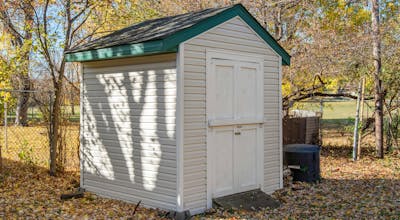
Step 1: Assess vulnerabilities
Before putting any measures in place, start by assessing the vulnerabilities in your outdoor spaces. This will help you to decide which specific areas to target. For example, weak or worn garage doors may need stronger locks and security bars, while windows might require reinforced glass or additional locks. Around 33% of domestic burglaries happen when the burglar enters through the back of the house, so assessing garden gates and rear access points is just as important as checking the buildings.
Step 2: Upgrade locks and hinges
Locks and hinges play a crucial role in keeping outdoor areas secure. High-performance locks, such as Squire’s CP50CS padlock which features a hardened steel closed shackle, are an excellent choice to keep your belongings safe. Worn or loose hinges can also weaken overall security, so it’s essential to replace or reinforce them for maximum protection.
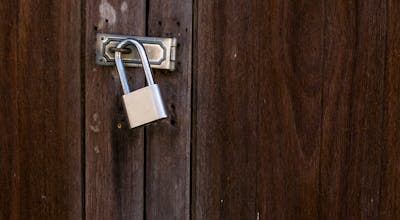
Step 3: Enhance visibility and accessibility
A lack of visibility is a key reason why garages, sheds, and outbuildings are common targets. Investing in lighting to illuminate these spaces helps to deter intruders, showing these areas are well maintained and monitored. Trimming hedges and keeping paths well-lit also reduces hiding spots, enhancing accessibility and visibility.
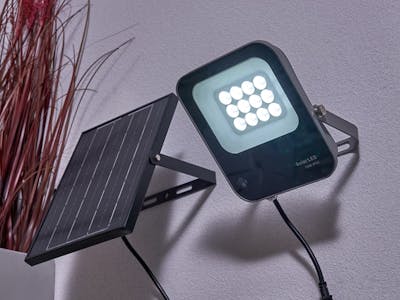
Step 4: Install alarms and cameras
Installing alarms and CCTV cameras is an excellent way to protect your outdoor areas. If an attempt is made to gain entry, the alarm will sound and alert you immediately, allowing you to act quickly. Cameras also mean that even when you’re away you can monitor your property remotely, and if anyone does gain access, you’ll have evidence of the act.
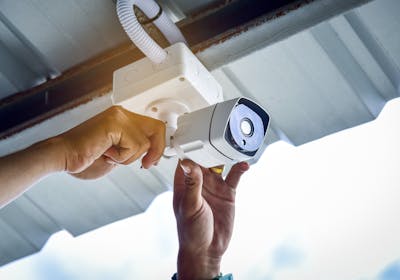
Step 5: Complete regular checks
Once you have installed all the necessary security devices needed for your outdoor space, it’s important to complete regular checks. According to a survey conducted by Aviva, 57% of homeowners said they owned a shed, yet 37% admitted to not checking it’s locked before they go to bed. Not overlooking these vital checks helps ensure your outdoor areas are secure. It also enables you to identify any new vulnerabilities that need addressing, spot equipment that requires maintenance or upgrading, and ensure all your security measures continue to function as intended.
Common Mistakes to Avoid
While following the steps above will greatly improve security, there are common mistakes that can undermine your efforts. Knowing what these are will help you to ensure you don’t make them, creating a comprehensive security setup and enhancing your peace of mind.
Forgetting to Secure Windows
Forgetting to secure windows can significantly compromise security, as they are a common entry point for intruders. Upgrading locks, installing alarms, and increasing visibility may not be enough if windows are left open or unlocked. Always ensure windows are fitted with sturdy locks and are kept secured when not in use.
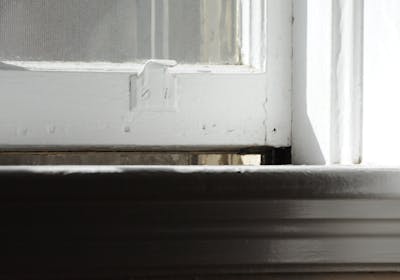
Not Checking Lighting or Alarms Regularly
Failing to check lighting or alarms regularly can cause security to be compromised. If these devices need new batteries, maintenance, or repairs, you won’t be aware unless regular checks are made. Therefore, you’re not able to make any necessary upgrades and they won’t work as they should, compromising security and safety.
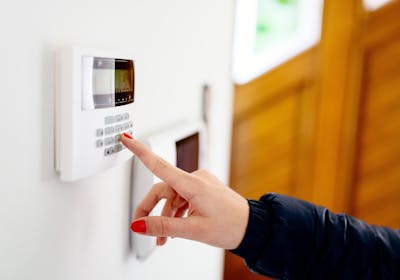
Installing security measures incorrectly
Having the correct security measures but installing them incorrectly makes them ineffective. For example, a poorly fitted lock or misaligned camera can fail when they’re most needed. Following the manufacturer’s guidelines carefully when installing your security devices is important to ensure everything works as intended.
Ignoring weak entry points
If, when assessing vulnerabilities, you forget to prioritise weak entry points, your entire security setup can be compromised. Intruders will often notice these vulnerable points and try to exploit them, so it’s vital to reinforce these areas. Whether it’s a loose door panel or a cracked window frame, properly repairing and strengthening them will ensure any attempted entry is unsuccessful.
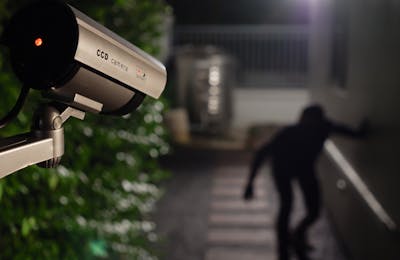
Discover security solutions at IronmongeryDirect
We’ve explored the importance of properly securing your outdoor areas, how to successfully do this, and the common mistakes to avoid. All that’s left to do now is to begin maximising your outdoor security with our selection of robust, high-performance security solutions at IronmongeryDirect.
FAQs
How can I make my garden secure?
Improving garden security involves prioritising visibility and removing potential hiding spots. Installing lighting, cameras, and upgrading locks on gates and outbuilding doors can all work to deter intruders and alert you if they do attempt to gain entry.
How do I burglar-proof my garage?
Burglar-proofing your garage involves investing in high-performance locks, reinforcing the door and frame, and installing alarms or motion-sensor lighting. By taking these steps, you’re protecting your garage, which often contains valuable tools, equipment, and vehicles, from intruders.
Is it bad to leave the garage half open?
Yes, while some people leave their garage half open to make it appear that someone is home, deterring potential thieves, this practice is risky. If opportunistic burglars attempt entry, an open garage makes it easy for them to gain access.
What is the best way to secure a shed?
The best way to secure a shed is to invest in high-performance locks. Adding lighting to improve visibility and cameras to monitor activity are also effective ways to increase protection and deter potential intruders.
Is it better to have wired or wireless alarms?
Both wired and wireless alarm systems are effective at alerting you of unauthorised access. The option that’s better suited to you depends on your property layout and personal preferences. Wireless alarms are highly reliable and easier to install, while wired systems are ideal for permanent setups.
What is the best type of lock for a garden shed or outbuilding?
The best type of lock for a garden shed or outbuilding is a multipoint lock or heavy-duty padlock. Multipoint locks secure the door at several points, making it much harder to force open, whereas high-grade padlocks provide strong external protection.
How often should I check or maintain my security measures?
You should regularly check your security measures, at least once every three to six months. This ensures you’re aware of whether your devices are not working as they should, which could compromise your security. As October is National Home Security Month, now is the perfect time to review, maintain, and upgrade your security systems.
This blog was written with support from Henry Squire.
